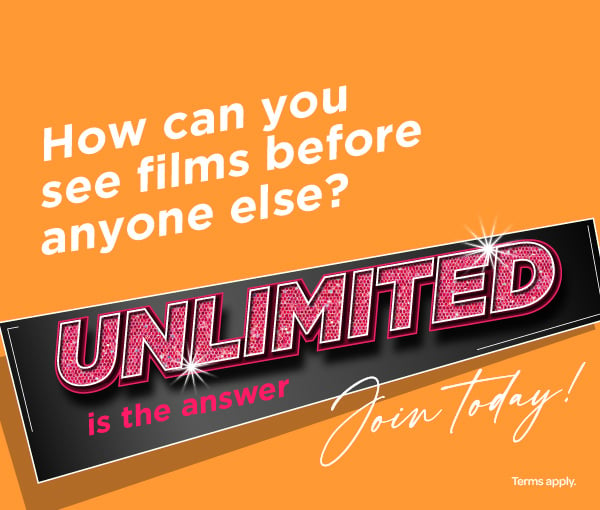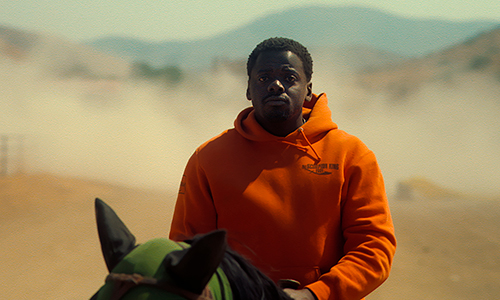
Jordan Peele is back this month with his latest horror opus, NOPE. The Oscar-winning director of Get Out and Us once again prepares to scramble our brains and tingle our spines with another provocatively exciting slice of satirical mayhem.
Get Out star Daniel Kaluuya plays Hollywood horse wrangler OJ who, along with his sister Em (Keke Palmer), becomes witness to strange phenomena. Suffice to say, nothing is as it seems in Peele's world, the celebrated filmmaker mixing up alien invasion tropes with Tinseltown's marginalisation of the African-American community and lots more meaty subject matter.
With Get Out and Us headed back to Cineworld screens ahead of Nope's release, we wanted to round up several of the director's most memorable sequences. Scroll down to discover what they are.
WARNING: THE FOLLOWING MAY CONTAIN SPOILERS
Get Out (2017)
1. Chris is trapped in 'the sunken place'
In Peele's laceratingly creepy social thriller, Invasion of the Body Snatchers meets Guess Who's Coming to Dinner. Daniel Kaluuya gives a blinding, Oscar-nominated performance as unsuspecting photographer Chris who is drawn into a deadly and ghoulish conspiracy of silence at his white girlfriend's parents' house.
Peele's capacity for piercing and disturbing visual metaphor becomes clear when matriarch Missy (Catherine Keener) hypnotises, subdues and subsumes Chris as part of her family's diabolical plans. The actualization of the terrifying 'sunken place' speaks volumes about the racial marginalisation undertaken by seemingly liberal communities, a desire for control masked beneath the veneer of a cosy fireside parlour and a china tea cup.
2. Logan King
Upon awakening from the sunken place, Chris begins to suspect himself. Was it all a dream? Is it simply social paranoia about being the only African-American person in a seemingly all-white enclave? Of course, we, the audience, know something deeply suspicious is afoot and Peele milks this tension superbly, playing on the implicit vulnerability of the central character while ramping up the awkwardly hilarious social satire.
When his girlfriend Rose (Allison Williams) introduces Chris to a bevy of ailing and rich white visitors, we're at first appalled to think that he's being shown off as some kind of exotic other, subject to implicit racial stereotyping and bigotry. So far, so uncomfortable, and yet it's perversely hilarious in its jaw-dropping incorrectness. However, Chris then meets Logan King (Lakeith Stanfield), the apparent partner of an elderly white woman, and the puzzle pieces start to snap into place as the wider conspiracy takes shape.
3. 'No, no, no...'
You know it's a well-cast movie when even the incidental players leave a vivid impression. Betty Gabriel is wonderfully unnerving as the apparently servile housekeeper Georgina who, Chris has observed, sports some rather eccentric habits.
However, it soon spills over from the quirky to the threatening when Georgina delivers a disquietingly off-key, deceptively whimsical explanation as to why she unplugged Chris' phone. Upon walking further into close-up with every passing edit, Gabriel's superb acting gives the impression of a powerful internal struggle. And, in hindsight, we realise that's exactly what's going on, the body of Georgina vying with the controlling soul of Rose's white grandmother, who has taken control from within.
Jordan Peele's ability to smoothly glide between the absurdist and the terrifying in such sequences cements Get Out as a hugely accomplished and brainy thriller.
Us (2019)
1. Red arrives with her tethered family
Peele's level of ambition steps up with his sophomore movie, a creepy story of doppelgangers and a mass social uprising. Us relies heavily on an extraordinary central performance (in fact, two of them) from Oscar-winner Lupita Nyong'o, who plays the haunted Adelaide Wilson. Tormented by the memory of meeting her twin in a funfair hall of mirrors, Adelaide seems to be anticipating the arrival of something dreadful.
And arrive it does in the form of the aforementioned mirror image: the raspy, crimson-clad, scissor-wielding Red, whose deeply twisted family unit is revealed as a perverse inversion of Adelaide's own. Declaring herself as one of the 'tethered', Red's arrival is a masterclass of slow-burning horror, clad in shadow and silhouette, and accompanied by Michael Abels' chilling choral score. The eventual reveal is, in classic Peele style, both absurd and horrifying, speaking volumes about the marginalisation of a hidden underclass that will only grow more potent and powerful as the movie proceeds.
2. The tethered begin their uprising
Such was the success of the Us marketing campaign that we were fooled into thinking only Adelaide's family would meet their doubles. Midway through, the jaw-dropping truth is revealed as the self-absorbed Kitty Tyler (Elisabeth Moss) and her dysfunctional brood come face to face with their own tethered mirror images, to bloodthirsty and shocking effect.
All of a sudden, we realise that Peele's target is not race, specifically, but the long-suppressed fears that human beings of all stripes and backgrounds possess. There's a universality to the scope of Us, laced, as ever, with a gallows streak of humour that is morbidly entertaining to experience. Upon attempting to summon the police to her aid, Kitty's reliance on the Alexa-like 'Ophelia' system backfires spectacularly when it misinterprets a call for the police for the N.W.A. hit 'F**k the Police.' That the movie can be thoughtful, horrific and hysterically funny at the same time is a testament to Peele's skills.
3. The truth about the tethered
A myriad of disorienting reveals confront the viewer during the climax of Us. Somehow, Peele is tasked with resolving an intimate story of personal demons and a wide-ranging critique of capitalist America, and somehow he pulls it off, although Us leaves us with a lot more questions than the rigorously arranged Get Out.
Adelaide has realised that the entrance to the tethered's subterranean layer is beneath the hall of mirrors that has haunted her for so long. Upon confronting Red, Adelaide is brought up to speed on the horrific truth of a feral underclass, each of whom is compelled to mirror the actions of the relatively affluent, liberated individual above. In so doing, Peele brings everything back to the pivotal image of the 1986 'Hands Across America' campaign, with which Us started.
Just like the sunken place in Get Out, Peele actualizes a complex metaphor through confident visual language and performance, Nyong'o delivering a physical masterclass as she differentiates between two very different characters. And that final twist? That spins our heads even further, lacing the already trippy premise with even more profound inquiries surrounding identity, motherhood and the role of masks in society, both physical and figurative.
Candyman (2021)
1. The 'Say My Name' exhibition
Peele is credited as the writer/producer on the Candyman remake, and there's no denying his imprimatur on the movie's incisive critique of race and bigotry. However, the director is Nia DaCosta and she does a superb job in wrangling the new Candyman's atmosphere, all the while honouring and building on the legacy of the classic 1992 original.
One of the remake's most imaginative conceits involves a twisted inversion of Beyonce's 'Say My Name', which was also used in the film's trailer to suggest the three-stanza summoning of the eponymous Candyman. When Chicago artist Anthony (Yahya Abdul-Mateen II) devises his own 'Say My Name' exhibition to explore the Candyman legend surrounding the gentrified Cabrini Green estate, he brings supernatural terror down upon his head. And it all starts with the aforementioned installation as a backdrop, with two unfortunate souls coming a cropper as they are, quite literally, surrounded and enveloped by Candyman iconography. It's a neat way of suggesting the terrifying, ongoing influence of the hook-handed boogeyman.
2. Anthony sees Candyman in the mirror
The notion of the mirror image, deployed implicitly but effectively in the Peele-directed Us, receives its most overt expression in Candyman's creepiest sequence. Director Nia DaCosta envisages the idea of a split Jekyll and Hyde personality with all the ghoulish glee she can muster as the hapless Anthony is confronted with his demonic alter-ego, one that replicates his exact movements.
Of course, it's not just about the surface frisson. The Candyman remake is concerned with legacy on a multitude of different levels, and Anthony is the common denominator. When Anthony discovers that he was rescued as a baby from a bonfire, we connect the dots with the end of the first Candyman movie from 1992. Immediately, we realise that he was rescued by former grad student Helen Lyle (Virginia Madsen) who sacrificed herself to the Candyman legend in order so that Anthony could live.
The presence of Candyman in the mirror is, therefore, a terrifying representation of the latent history and horror that has existed within Anthony since his infant years.
3. Attempting to revive the myth of Candyman
One twist too many? The Candyman movie may bite off more than it can chew in its final stages, but there's no denying the film's thematic complexity. It's revealed that the apparently benign Cabrini Green resident Burke (Colman Domingo), a self-appointed expert on the Candyman legend, is looking to add more unfortunate souls to the Candyman 'hive' in a bid to empower the legend.
Burke surmises that the Candyman mythology has always been about more than simply one man, making a salient point about the malleability of urban myths as they pass down from one generation to another. To this end, Burke is aiming to use Anthony as a pawn in his scheme to combat the gentrification of Cabrini Green, leading to a final showdown and a long-anticipated Tony Todd cameo that sends us away grinning and reeling in equal measure.
Are you ready to take a journey into terror? Then click here to book your tickets for NOPE, releasing in Cineworld on August 12th.
Don't forget that Get Out screens in Cineworld on August 9th, followed by Us on August 10th.
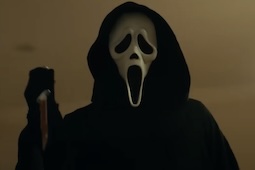
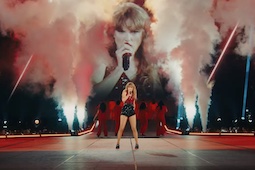
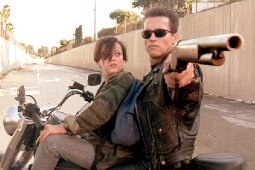
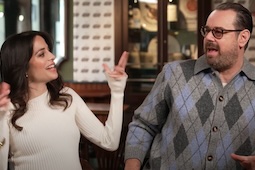
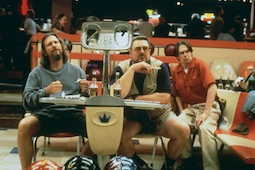
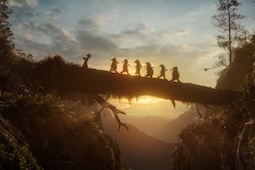
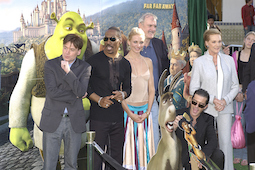
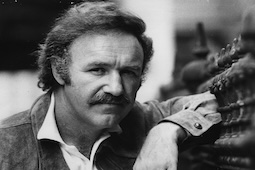
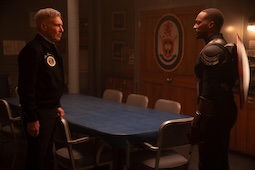
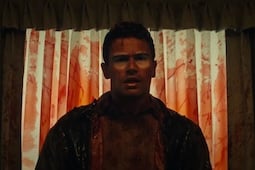



.jpg)
.png)

